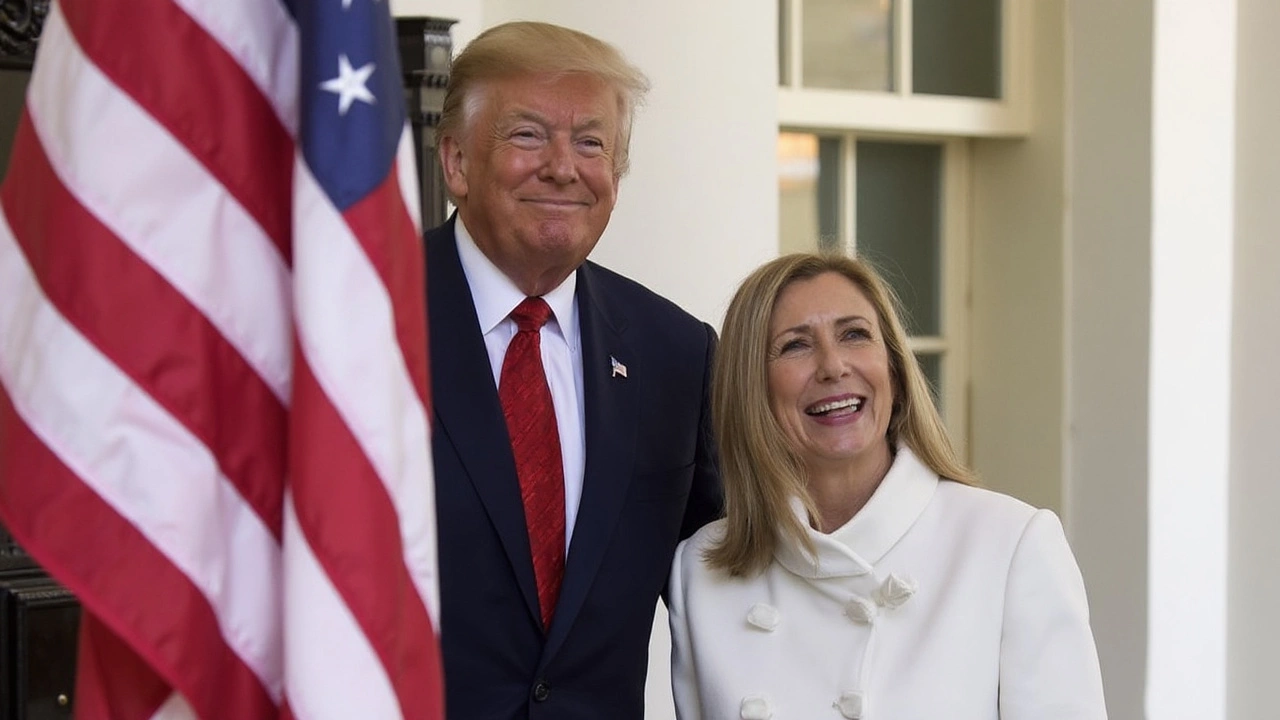Meloni’s High-Wire Act: Navigating Transatlantic Trade and Politics
Giorgia Meloni wasn’t just shaking hands when she walked into the White House for her meeting with Donald Trump on April 17. She was walking a tightrope. As the first European leader to meet Trump after his controversial 20% tariff on EU exports, Meloni’s role instantly shifted from representing Italian interests to acting as a go-between for the entire European Union.
The backdrop? The trade dispute rattled European capitals after Trump imposed duties that instantly threatened industries from French wine to German cars. While the White House later hit the pause button—ninety days for tough talk and hopefully cooler heads—the uncertainty has left exporters on edge. Meloni’s meeting followed hours of coordination with EU Commission President Ursula von der Leyen and mirrored a similar push from EU Trade Commissioner Maros Sefcovic, who met with U.S. officials just prior. Brussels wanted Meloni to find out: Can a “zero-for-zero” deal, dropping tariffs entirely, really be on the table? Or is America only interested in minimum baseline duties?
Rather than hunting for instant breakthroughs, Meloni zeroed in on understanding Trump’s endgame. The U.S. president’s style—hardball from the negotiating table, skepticism toward international agreements—meant even getting a straight answer was no small feat. EU and Italian officials worry that even if tariffs stay paused, non-tariff barriers—think complicated paperwork or custom rules—could quietly replace them. Sefcovic’s call for a “significant joint effort” underlines the need for the kind of slow, grinding negotiations that rarely make headlines, but shape billions in trade.
Shared Ground and Sticking Points: Migration, Ukraine, and NATO
On some fronts, Meloni and Trump speak the same language. Both rail against open migration policies and see eye-to-eye on defending traditional values. Meloni’s own rise in politics was fueled by being tough on borders—a stance similar to what propelled Trump’s White House campaign. Their shared skepticism of multilateral organizations feeds into a partnership that feels more personal than procedural.
But the cracks start to show with Ukraine. Meloni has kept Italy consistently behind Kyiv, refusing to waver in her support for President Zelensky after Russia’s invasion. Trump, on the other hand, rarely misses a chance to criticize the Ukrainian leader. He claims the invasion wouldn’t have happened on his watch and has hinted at pulling back U.S. financial and military support, a stark contrast to the EU’s current position. That makes Meloni’s balancing act even trickier. She can’t afford to alienate European allies rallying for Ukraine, nor does she want to clash publicly with a U.S. president—especially one who could win another term.
The question of NATO defense spending adds another layer. Trump has been vocal for years: pay up or face American disengagement. With Italy’s defense budget at just 1.49% of GDP—well under NATO’s recommended 2%—it’s a sore spot. While nothing concrete changed during their conversation, the message was loud and clear: Europe, and especially Rome, needs to put more skin in the game.
Meloni ended the visit by inviting Trump to Italy—a gesture as much about courtesy as it is about keeping lines of communication open. If tensions over trade or defense flare up, personal diplomacy could be Rome’s best insurance policy.
This meeting wasn’t just about tariffs or headlines. It’s about Meloni’s attempt to hold the ring between a skeptical, assertive America and a sometimes-fractured European Union. She’s betting she can be the bridge—not just for Italy, but for an entire continent, even as the ground beneath keeps shifting.
